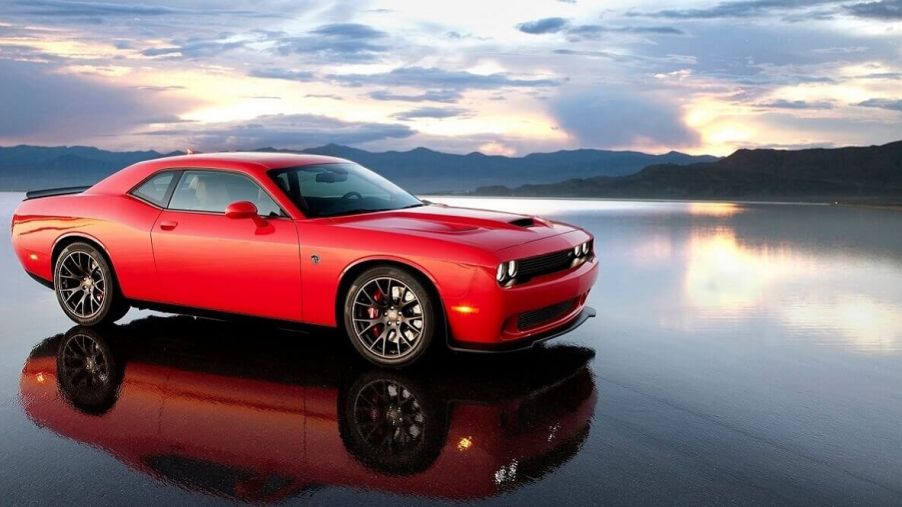
Only Two Standard Dodge Challenger Engine Options Won’t Embarrass You
The Dodge Challenger will bow out of the muscle car segment after the 2023 model year. However, during its time in the horsepower-hungry performance coupe space, the model brandished some of the most powerful supercharged and naturally aspirated engine options on the market. Still, after driving every standard engine option in the Dodge Challenger lineup, I found only two of the four displacements are explosive enough for the model’s larger-than-life dimensions. Specifically, the 6.4L and 6.2L mills in the Challenger Scat Pack and SRT Hellcat are childishly fun.
What engine options are in the late-model Dodge Challenger?
The Dodge Challenger offers four different displacements, with three naturally-aspirated engines and a library of supercharged 6.2L V8s. As a result, the 2023 Challenger has a 722 horsepower range from the SXT to the limited-edition SRT Demon 170.
| 3.6L Pentastar V6 | 303 horsepower | 268 lb-ft of torque |
| 5.7L Hemi V8 | 372-375 horsepower | 410 lb-ft of torque |
| 6.4L Apache V8 | 485 horsepower | 475 lb-ft of torque |
| Supercharged 6.2L V8 | 717-1,025 horsepower | 656-945 lb-ft of torque |
However, even with a baseline of 303 horsepower, the Challenger’s girth is an obstacle to outright speed. For instance, the 2023 Dodge Challenger SXT RWD has a curb weight of 3,841 lbs, per Car and Driver. Using that significant weight and its horsepower output, the model has a power-to-weight ratio of under 0.08 horsepower per lb. In comparison, a 2023 Ford Mustang EcoBoost has a power-to-weight ratio of nearly 0.09 horsepower per lb.
Unfortunately, the Challenger’s weight was painfully obvious with the SXT and GT’s Pentastar V6 mill. While responsive, the SXT’s smoothness didn’t enthuse me as much as the thunderous pantomime in the sillier Mopars at higher trims. No, not even the R/T and its entry-level Hemi V8 elicited the same smiles per gallon as the Challenger R/T Scat Pack and the tire-vaporizing SRT Hellcat.
Which engines in the LA-platform Dodge Challenger lineup are the best?

While the 5.7L Hemi V8 in the 2023 Dodge Challenger R/T is good for a five-second sprint to 60 mph, it’s not up to the standards of the vociferous V8s residing under the hoods of the R/T Scat Pack and SRT Hellcat models.
Of course, taming the Mopar madness requires finesse, as stabbing the throttle in a Dodge Challenger SRT Hellcat will result in the coupe making a meal out of its own 275mm tires.
What is faster, a Hellcat or a Scat Pack?

My experience driving the R/T Scat Pack involved fast-twitch sprints and thunderous throttle response, but the SRT Hellcat is an entirely different animal. With 717 horsepower on the tap in the “standard” model, the Hellcat can sprint to 60 mph in around 3.6 seconds, should you nail a launch just right without eviscerating your tires.
Among the final LA-platform Dodge Challengers, the 6.4L Apache and supercharged 6.2L V8 engines are the only way to stay competitive with alternatives like the Ford Mustang GT and Chevrolet Camaro 1SS. Of course, you’ll have to budget for gas and tires.
What do you think about the Challenger’s library of engines? Share your thoughts in the comments below!



